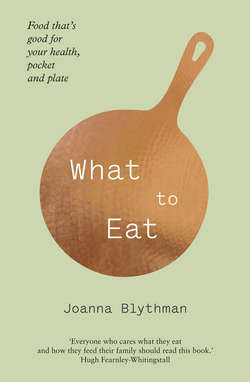Читать книгу What to Eat: Food that’s good for your health, pocket and plate - Joanna Blythman, Joanna Blythman - Страница 21
ОглавлениеTomatoes
The defining quality of a really good tomato is a balance of sweetness and acidity. To achieve this, a number of different factors come into play. The variety grown is critical. The justly famous tomatoes of southern Europe, such as the Sicilian Pachino, San Marzano and Cuor di Bue tomatoes or the French Marmande have taste built into their DNA, whereas more recently developed varieties, such as the revealingly named Moneymaker, were bred to meet different goals entirely: regular appearance and size, split-resistant skins, long shelf life. Sun and heat are also essential to grow tomatoes with really memorable flavours.
Some tomato buffs argue convincingly that home-grown tomatoes, which have reached maturity slowly, growing outdoors (or only lightly protected from the elements) in a sunny, sheltered spot on fertile soil, can give imports from sunnier countries a run for their money. Very few tomatoes are now grown that way in Britain so nearly all the home-grown tomatoes you buy will have been grown in glasshouses which are notorious for producing high-tech tomatoes that look the part but don’t taste it. The Germans have a word for them, ‘wasserbomben’ – literally water bombs – an ironic description of those pinkish, mushy fruits that we have all tasted. That said, the eating quality of glasshouse-grown tomatoes has improved immeasurably as growers have selected more intrinsically flavoursome varieties, allowed them to ripen longer and picked them when they are more mature.
When choosing fresh tomatoes, as a general rule, and whether home-grown or imported, small is beautiful. Large plum and beefsteak tomatoes often disappoint – although they can be quite good for cooking as opposed to eating raw – but small plum and cherry tomatoes usually have the best flavour. Two of the most consistent cherry varieties from a taste perspective are Gardener’s Delight and Sungold. Try to make a note of the name of the variety to build up your own mental checklist of which varieties pack a flavour and which are duffers.
Don’t get sidetracked by tricksy appearance. Tomatoes come in all shapes, sizes and hues: beefsteak, cherry, yellow, black, gold, plum, mini-plums, cocktail, pumpkin and heart-shaped. The only way you can tell if they taste any good is by trying them. Don’t automatically assume that pricier tomatoes with a ‘vine-ripened’ label will taste better. They might, but equally they might be from an inherently tasteless variety, or ripened in an artificially heated glasshouse, so cheaper, less upmarket tomatoes might outperform them on flavour and texture.
